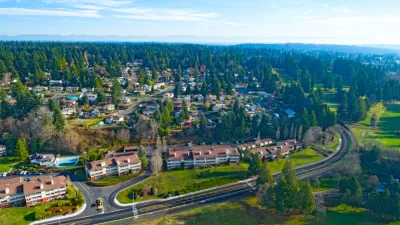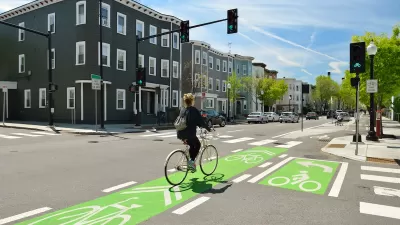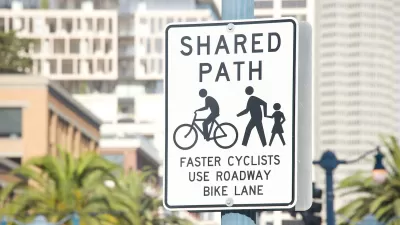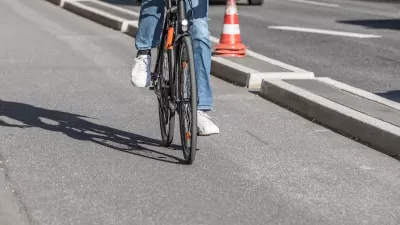A new requirement that mandates bike and pedestrian improvements on state road projects is starting to pay off with real commitments to Complete Streets infrastructure.

According to an article by The Urbanist’s Ryan Packer, Washington state’s new Complete Streets law is starting to pay off. Part of a legislative package known as Move Ahead Washington, the mandate requires the Washington State Department of Transportation (WSDOT) to “coordinate adding bike and pedestrian facilities when basic maintenance is planned.”
As Packer explains, “Any state highway projects over $500,000 in cost now require the state to evaluate whether gaps in both existing bicycle and pedestrian networks can be filled, and standards are required to be adhered to when it comes to separation between those facilities and automobile travel lanes.”
The law could soon prove itself in Edmonds, where a “full overhaul” of State Route 99 is underway. For Edmonds, the new requirements mean adding 4.5-foot bike lanes in each direction to their original road redesign plans. “The real time changes we see to accommodate the extra nine feet of space required are planned buffers and planting strips narrowing and the twelve foot business access-and-transit (BAT) lanes shrinking by one foot each. Otherwise the six travel lanes along the highway are unaffected.” These small but important changes, Packer notes, would have been left on the table without the Complete Streets law.
Packer details the funding allocated to Complete Streets and other projects around the state slated to get bike and pedestrian improvements. Optimistically, Packer concludes that “The new requirement has the potential to correct decades of oversights from local leaders and transportation officials when it comes to the bike and pedestrian networks on Washington’s state highways.”
FULL STORY: Washington’s Complete Streets Mandate Starts to Pay Dividends

Manufactured Crisis: Losing the Nation’s Largest Source of Unsubsidized Affordable Housing
Manufactured housing communities have long been an affordable housing option for millions of people living in the U.S., but that affordability is disappearing rapidly. How did we get here?

Americans May Be Stuck — But Why?
Americans are moving a lot less than they once did, and that is a problem. While Yoni Applebaum, in his highly-publicized article Stuck, gets the reasons badly wrong, it's still important to ask: why are we moving so much less than before?

Using Old Oil and Gas Wells for Green Energy Storage
Penn State researchers have found that repurposing abandoned oil and gas wells for geothermal-assisted compressed-air energy storage can boost efficiency, reduce environmental risks, and support clean energy and job transitions.

Updating LA’s Tree Rules Could Bring More Shade to Underserved Neighborhoods
A new USC study finds that relaxing Los Angeles’ outdated tree planting guidelines could significantly expand urban tree canopy and reduce shade disparities in lower-income neighborhoods, though infrastructure investments are also needed.

California's Canal Solar Projects Aim to Conserve Resources and Expand Clean Energy
California’s Project Nexus has begun generating electricity from solar panels installed over irrigation canals, with researchers and state agencies exploring statewide expansion to conserve water and boost clean energy production.

HHS Staff Cuts Gut Energy Assistance Program
The full staff of a federal program that distributes heating and cooling assistance for low-income families was laid off, jeopardizing the program’s operations.
Urban Design for Planners 1: Software Tools
This six-course series explores essential urban design concepts using open source software and equips planners with the tools they need to participate fully in the urban design process.
Planning for Universal Design
Learn the tools for implementing Universal Design in planning regulations.
Heyer Gruel & Associates PA
City of Moreno Valley
Institute for Housing and Urban Development Studies (IHS)
City of Grandview
Harvard GSD Executive Education
Salt Lake City
NYU Wagner Graduate School of Public Service
City of Cambridge, Maryland





























